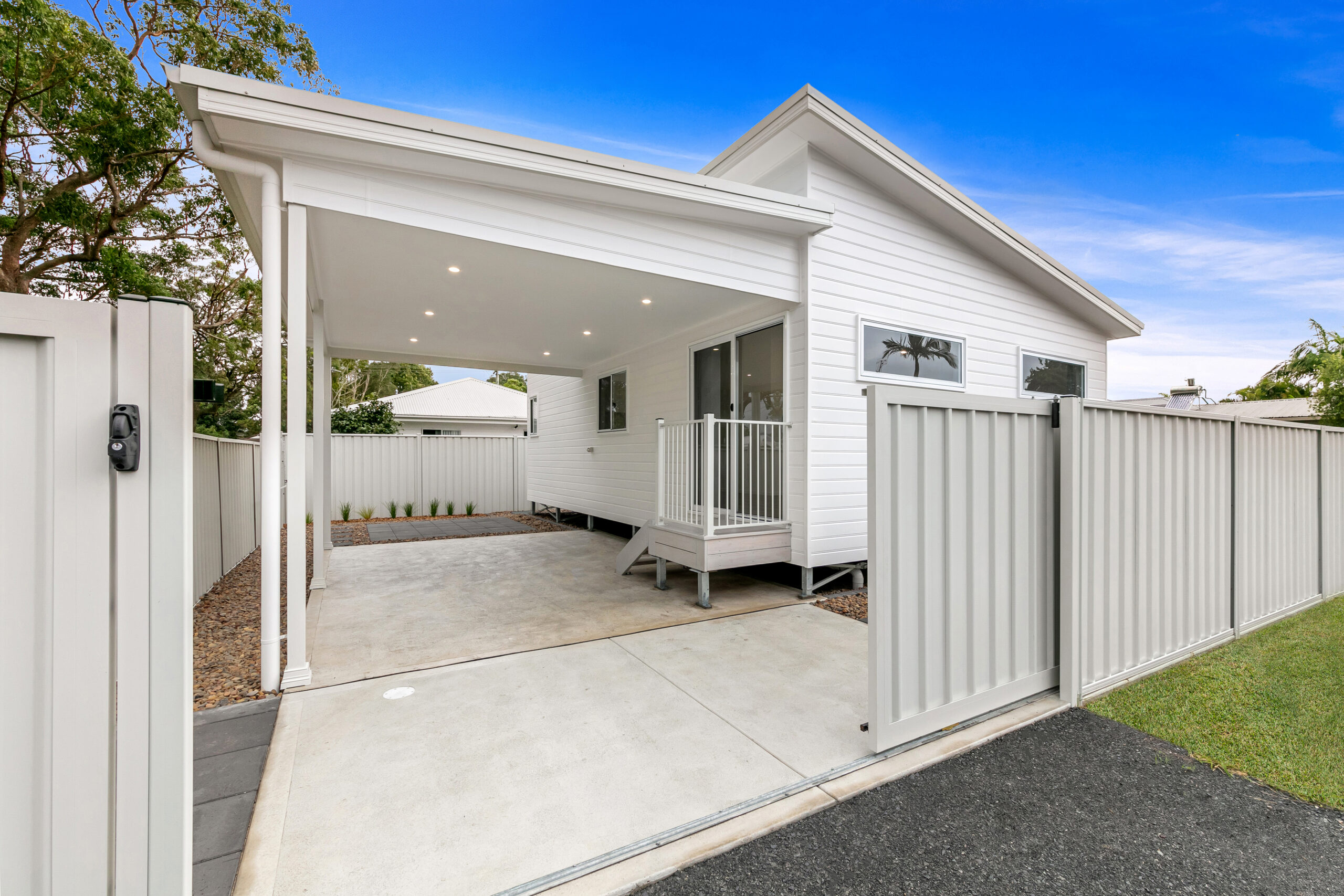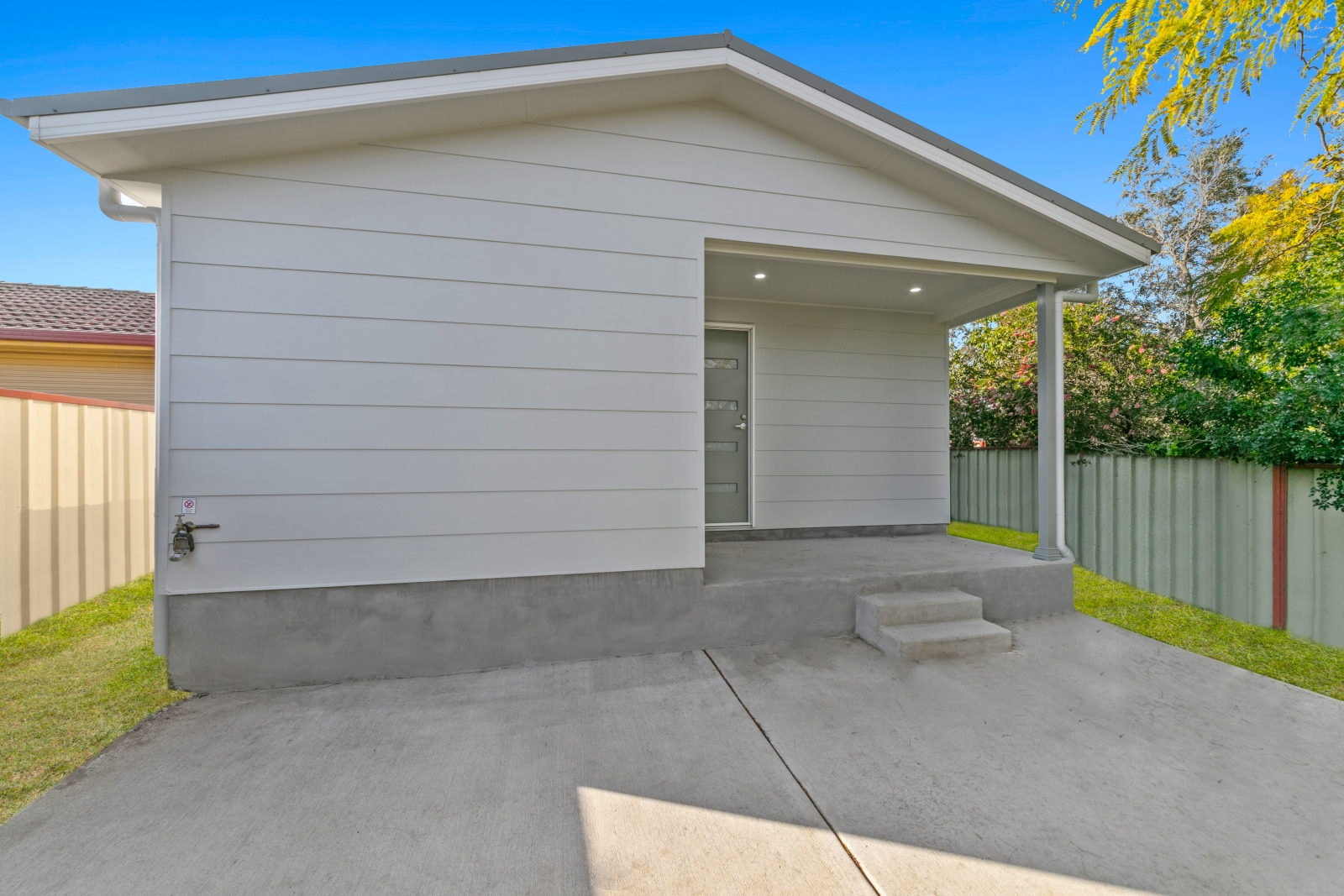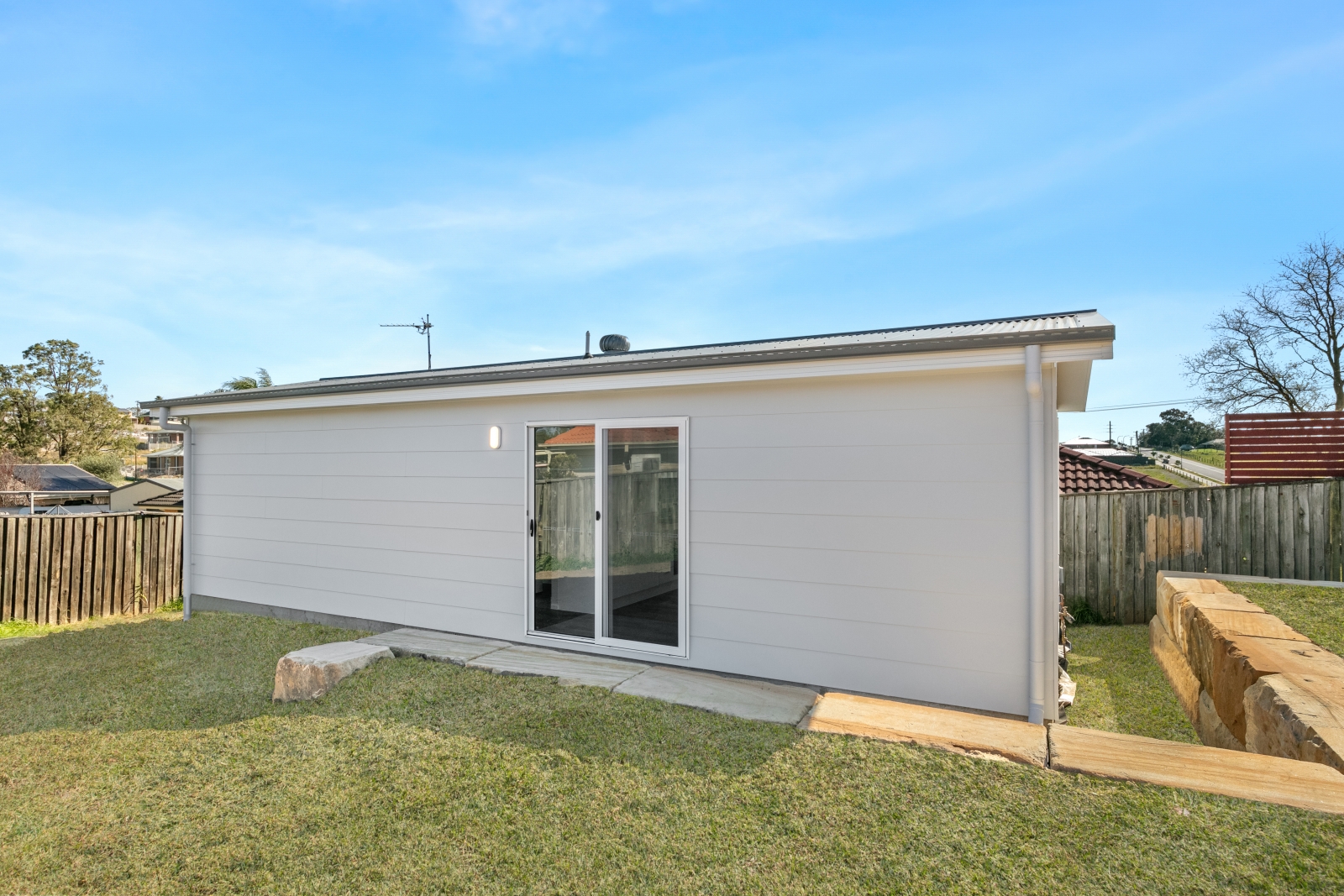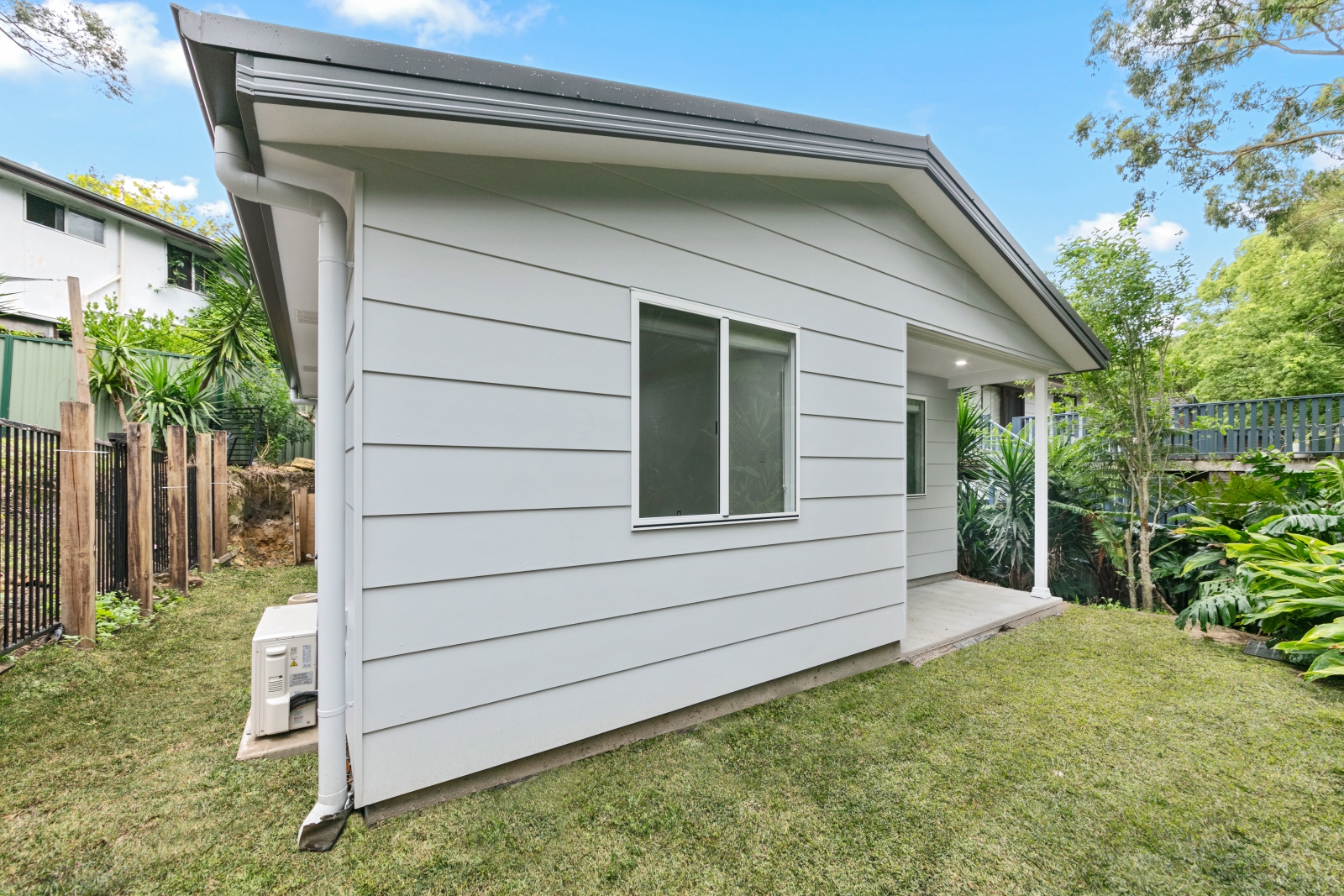Everything You Need to Know About Building a Granny Flat on the Central Coast of NSW
Building a granny flat on the Central Coast of New South Wales is a great way to add value to your property, create additional living space, or generate rental income. However, several factors must be considered before starting your Central Coast Granny Flat project. Not looking to build in the Central Coast? Try the Newcastle, Lake Macquarie, and Hunter Valley Regions guide instead.
This Granny Flats Central Coast Guide will cover:
- Council Requirements
- Approvals
- Site Size Requirements
- Regulatory Issues
- Design Considerations
- Costs
Council Requirements and Approvals
The first step in building a granny flat is understanding the Central Coast Council requirements and obtaining the necessary approvals. On the Central Coast, the Central Coast Council governs these processes. Here are the key points:
- Complying Development Certificate (CDC): If your granny flat meets specific standards, you may be eligible for a CDC, simplifying the approval process. This is generally faster and less complex than a Development Application (DA).
- Development Application (DA): If your project does not meet the CDC criteria, you must submit a DA to the Central Coast Council. This process involves more scrutiny and can take longer.
- Council Consultation: It’s wise to consult with the Council early in your planning process to ensure you understand all requirements and avoid potential issues.
PRO TIP: Read our article: Can You Build A Granny Flat Without Council Approval?
Site Size Requirements
To build a granny flat, your property must meet specific size requirements:
- Minimum Lot Size: The minimum lot size for a granny flat on the Central Coast is typically 450 square meters.
- Maximum Floor Area: The maximum allowable floor area for a granny flat is 60 square meters or 100 square meters in certain rural and large residential zones.
- Setbacks and Open Space: Your granny flat must comply with setback requirements (distance from property boundaries) and maintain a certain amount of open space.
Regulatory Issues
When planning your granny flat, be aware of the following regulatory issues:
- Building Code of Australia (BCA): Your granny flat must comply with the BCA, which sets out the standards for construction, safety, and energy efficiency.
- Local Environmental Plans (LEPs) and Development Control Plans (DCPs): These documents outline specific planning controls and guidelines for development in your area. Central Coast LEP is here, and Central Coast Development Control Plan (DCP) is here.
- Bushfire-prone Areas: If your property is in a bushfire-prone area, additional requirements for construction and materials may apply. Central Coast steel frame company Australian Steel Framing has published a valuable article on this subject: Building a Home In A Bushfire-Prone Area?
Design Considerations
Designing your granny flat involves several considerations to ensure it meets your needs and complies with regulations:
- Functionality: Determine the primary purpose of the granny flat (e.g., rental income, guest accommodation, home office) and design it accordingly.
- Accessibility: Consider accessibility features, especially if the granny flat is intended for elderly occupants.
- Aesthetics: Ensure the design complements your existing property and the surrounding area.
- Sustainability: Incorporate energy-efficient features and sustainable materials to reduce environmental impact and operating costs.
Costs
The cost of building a granny flat can vary widely depending on several factors:
- Construction Costs: Expect to pay between $215,000 and $240,000 for a 60-square-meter granny flat on the Central Coast. Custom designs and high-end finishes will increase costs.
- Approval Fees: Budget for Council application fees, ranging from a few hundred to several thousand dollars.
- Professional Fees: You may need to hire architects, surveyors, and other professionals, which can increase costs.
- Utilities and Services: Connecting utilities (water, electricity, sewerage) to your granny flat can incur additional expenses. If your site cannot connect to municipal sewers, you will need to consider a Septic Tank or Wastewater System. Check out our article: Building a Granny Flat In Unsewered Areas, What Are The Options?
PRO TIP: Read our comprehensive articles on Granny Flat pricing and finance:
Other Important Information
- Insurance: Ensure adequate insurance coverage is in place during construction and upon completion of the granny flat.
- Rental Income: If you plan to rent out your granny flat, research local rental rates and ensure you comply with tenancy laws. According to the 2024 CoreLogic Regional Market Update, the Morisset and Cooranbong regions have a medium Rental yield of $536 per week, up 6% from last year and 33% over the previous five years.
- Tax Implications: Rental income from your granny flat is taxable, so consider consulting with a tax professional.
- Resale Value: A well-designed and approved granny flat can significantly increase your property’s resale value.
Conclusion
Building a granny flat on the Central Coast of NSW can be a rewarding investment, providing additional space and potential rental income. However, it’s essential to understand the Council requirements, approvals, site size requirements, regulatory issues, design considerations, and costs involved. By carefully planning and consulting with professionals, you can ensure a successful granny flat project that meets your needs and enhances your property.
Recent Granny Flats Central Coast Projects
Granny Flat Project: Ashtonfield, Maitland
Situated in Ashtonfield, this stylish and functional two-bedroom granny flat was custom-built for Maitland investors. The design combines quality craftsmanship and practicality, tailored to maximise the property’s dual rental income potential while creating an appealing and well-equipped space for tenants.
Granny Flat Project: Gillieston Heights, Maitland
Explore our custom-designed one-bedroom granny flat project in Gillieston Heights, tailored for comfort and functionality. This modern build maximises backyard space while meeting the unique needs of the family, showcasing how a granny flat can provide both value and independence.
Granny Flat Project: Erina, Central Coast
This 1-bedroom granny flat in Erina, based on our Branxton floor plan, was designed to provide independence and comfort for our client’s mother. Situated on busy The Entrance Rd, the project faced logistical challenges with traffic control, steep terrain, and bushfire BAL 29 compliance. Despite the complexities, the result is a modern, functional space that brings family closer together while meeting all standards.
P J Cook has years of experience building granny flats throughout the Central Coast region. We take pride in delivering modern, spacious, and expertly finished projects for our local community.
Explore our range of granny flat designs or Contact P J Cook today to discuss options for adding a granny flat to your property on the Central Coast. We service the following areas on the Central Coast of NSW: Gosford, Wyong, The Entrance, Terrigal, Woy Woy, Avoca Beach, Ettalong Beach, Umina Beach, Toukley, Bateau Bay, Kincumber, Lake Haven, Tuggerah, Wamberal, and Ourimbah through to Lake Macquarie and Newcastle.
Looking for more: Sixteen Things You Should Know About Building a Granny Flat with P J Cook Building




